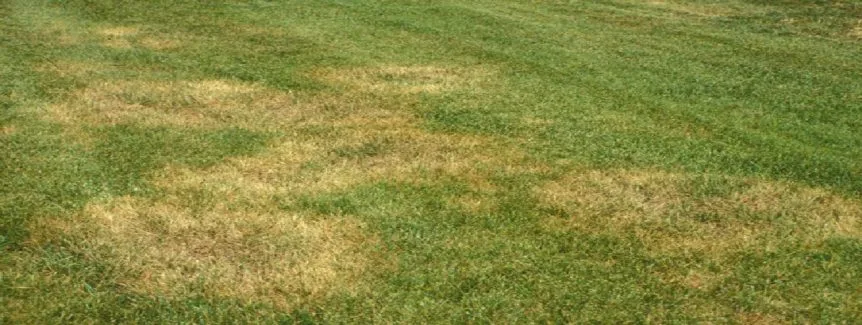Controlling Brown Patch on Warm-Season Turf grasses
Brown patch is the most damaging disease of warm-season turf grasses in Arkansas. St. Augustine grass, Zoysia grass, and centipede grass are most susceptible to this disease; common and hybrid Bermuda grasses are rarely damaged.
Excessive nitrogen fertility levels and thatch often lead to outbreaks of brown patch. At Natural State Horticare we use mostly organic fertilizers which usually negate this particular cause cause. The disease usually develops on lawns during periods of wet, overcast weather in late spring or fall. Damage is often heaviest after several days of showers with day temperatures of 60° to 80°F and heavy cloud cover.
In humid coastal areas, brown patch is usually found from late fall through early spring on St. Augustine grass and Centipede grass lawns during extended periods of mild, cloudy, wet weather.
Symptoms
Brown patch first appears in lawns as small, circular, brown areas several inches in diameter, which quickly increases to 3 to 6 feet. These areas often grow together, forming irregular patches of brown, blighted turf up to 20 feet in diameter.
The foliage of high-cut St. Augustine grass or Centipede grass turf often wilts and collapses, giving the blighted patches a sunken appearance. Damaged turf usually recovers when conditions no longer favor the spread of disease. Regrowth of the turf may start in the center of the blighted area, forming a ring or frog eye pattern. Weeds frequently invade turf damaged by brown patch.
Damage to individual grass plants is usually confined to the foliage. Leaves and leaf sheaths attacked by the brown patch fungus, Rhizoctonia solani, first become water-soaked, then wilt, and finally turn brown. On broad leafed turf grasses like St. Augustine grass, distinct tan-colored leaf spots surrounded by a water-soaked margin are sometimes seen. If the crowns of individual plants or stolons are invaded, large areas of a lawn may be killed.
Control Measures
Most of our competitors utilize fertility programs containing high nitrogen levels promoting the growth of soft, succulent leaves that are susceptible to attack by the brown patch fungus. To help prevent disease outbreaks, we apply a low rate of a nitrogen fertilizer in intervals through the growing season, or use a slow-release nitrogen source to maintain an even growth rate.Moisture also plays an important role in disease development. Good drainage is needed to remove excess water from low-lying areas. To speed evaporation of water from the foliage, prune nearby trees and shrubs to reduce shade and improve air movement and sunlight penetration. Also, if you have a known fungal issue it is best to irrigate lawns at midday to minimize the time that the foliage remains wet.
Thatch also harbors the brown patch fungus. Periodic mechanical dethatching or core aerification is needed to prevent thatch buildup, especially on high-maintenance St. Augustine grass and Zoysia grass lawns. We always do our best to limit preventive treatments to portions of those lawns that have previously been damaged by this disease.



Comments (0)
Thanks for your comment!
Thanks for your feedback! Your comments have been successfully submitted! Please note, all comments require admin approval prior to display.
Error submitting comment!
There is a problem with your comment, please see below and try again.